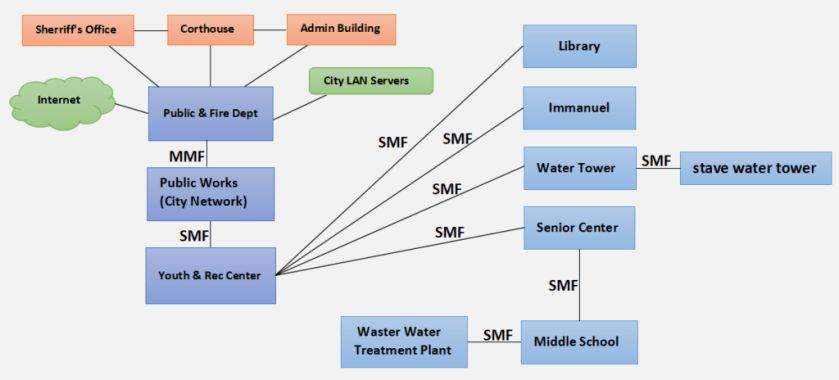PON (passive optical network) is one of a common optical fiber network architectures. It is characterized by the “splitting” of the optical fiber one or more times, resulting in the sharing of optical fiber among multiple users. However, as networks grow in terms of subscriber counts, the scope and number of services offered, expanding the network bandwidth is inevitable. Coarse Wave Division Multiplexing (CWDM), known for its low cost and scalability to increase fiber capacity as needed, is a preferred method for PON network expansion. This article will focus on using CWDM technology to overcome bandwidth limitations in PON access networks.
Fibers in a PON are typically shared with several users. Hence the bandwidth of the fiber originating at the CO (center office) is shared among a group of users. The splitting of the network is accomplished by optical splitters. These splitters can split the fiber 2-32 times, which may introduce high losses in the network. Besides, as different places in a same network need different wavelengths, CWDM Mux is often deployed to multiplex these signals on a single fiber.
In PON (Passive Optical Network) network, whether in ring structures or point-to-point arrangements, different optical nodes need specific wavelengths. Therefore, at each node, a CWDM OADM is used to drop or add certain channels from the fiber as required,. Then the signals will be transmitted to the user through optical fibers. The following picture shows a simple PON network.

In PON networks, OLT has two float directions: upstream (getting an distributing different type of data and voice traffic from users) and downstream (getting data, voice and video traffic from metro network or from a long-haul network and send it to all ONT modules on the ODN).
The following figure represents a situation where existing subscribers intend to upgrade to higher value added bandwidth services. In order to satisfy customers’ needs for IPTV, VoIP, video on demand etc., the 622 Mb/s downstream capacity between the CO and the OLT, providing roughly 20 Mb/s to each subscriber, must increase.

Considering there may be new subscribers and services added, the targeted bandwidth requires at least a downstream CO/OLT link bandwidth of 2.5Gb/s. Therefore, four CWDM wavelengths are introduced to multiply the channels passing between the CO and OLT. This introduction of passive CWDM Mux/Demux can relieve the fiber exhaust effectively. The below figure shows the upgrading process.

Advantages of This Upgrade
Compared with laying a new fiber cable, the upgrade with passive CWDM is easily accomplished within hours after some modest investment in network planning. And the sum of material, labor, equipment and training expense is far less, which explain why many enterprises, private business users of LAN and data storage networks use passive CWDM too.
EPON stands for Ethernet passive optical network. It is an enabling technology that benefits consumers. Here is an EPON network, which was conceived to serve up to 64 subscribers. All users share a single bidirectional optical feed line. With the need for IPTV, HDTV and other higher bandwidth services growing, the downstream capacity 16Mb/s should be improved.

The picture below shows the same EPON deployment upgraded to 4Gb/s bandwidth capacity.

This upgrade uses 4 channels passive CWDM Mux/Demux to extend the whole network capacity, allowing the downstream capacity increase four times without affecting the upstream traffic.
Advantage of This Expansion
Using CWDM Mux/Demux effectively increases the network bandwidth capacity and reduces the cost. At the same time, it requires minimal modification of the existing infrastructure, which also saves labors.
CWDM technology offers significant benefits of low investment, minimal operating cost and very simple and straightforward upgrade planning and implementation. In addition, passive CWDM also provides scalability and network flexibility for network growth and bandwidth demands in the future. FS.COM supplies different channels of CWDM components. Welcome to contact us via sales@fs.com.
Related article: Examples of CWDM Network Deployment Solution







